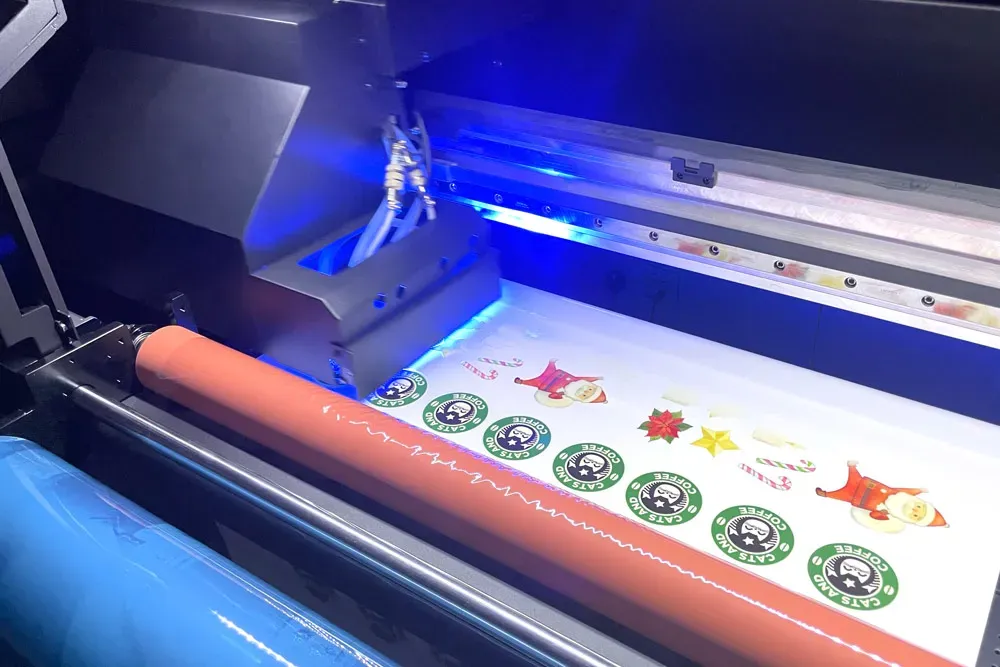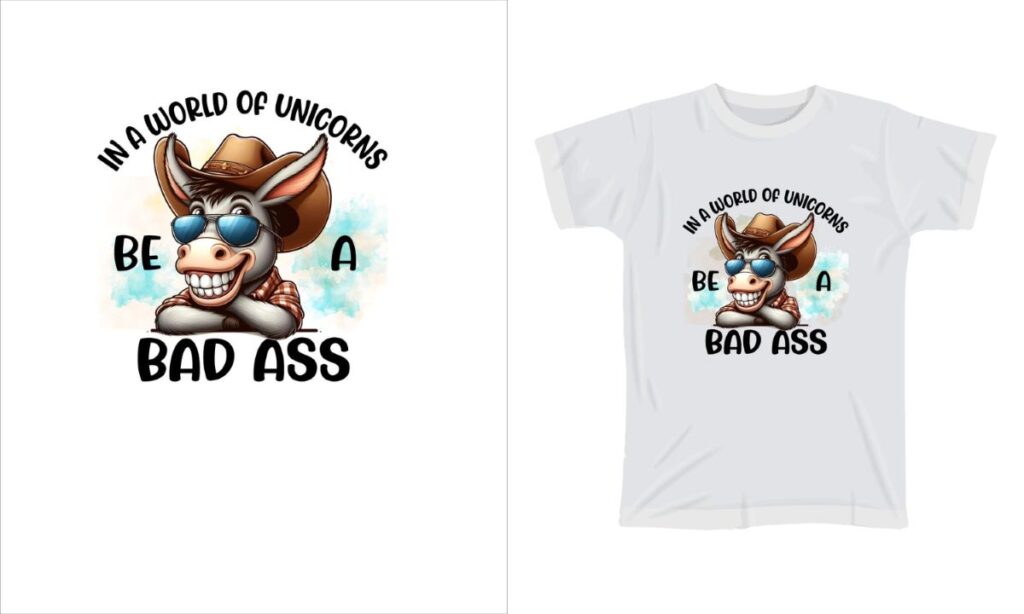UV DTF printing opens vibrant possibilities for designers and brands seeking high-contrast, durable graphics on textiles. This method uses DTF film as the transfer substrate to capture sharp images with flexible color control. It relies on UV-curable inks that cure quickly on the film, reducing ink bleed and preserving fine detail. Because the ink sits on the film rather than soaking into the fabric, it suits durable fabrics printing across cotton, blends, and polyesters. In discussions of printing technology, understanding DTF vs UV printing helps clarify where UV DTF stands in the broader landscape.
From an LSI perspective, you can think of it as a film-to-fabric transfer or direct-to-film technique that uses UV-curable chemistry to immobilize color on textiles. Other commonly used descriptions include film-based transfer printing, UV-ink textile decoration, and resin-assisted bonding, all pointing to the same core workflow. This approach shines for on-demand apparel, team jerseys, and promotional fabrics where bright color, crisp detail, and durable wear matter. When you compare it with traditional DTF or sublimation, the terminology may vary, but the underlying concept remains a UV-curable film transfer that bonds to fibers under heat and pressure.
What is UV DTF Printing?
UV DTF printing is a direct-to-film process that uses UV-curable inks printed onto a transfer film (DTF film). After printing, the ink is cured immediately with UV light, locking in color, sharpness, and detail on the film before the image is transferred to fabric. This method blends the precision of UV-curable inks with the flexibility of the DTF workflow, enabling vibrant designs across a wide range of fabrics.
Because the ink cures on the film rather than soaking into the fabric, UV DTF maintains fine lines and a broad color gamut. The eventual transfer to fabric relies on an adhesive powder or bonding layer that helps the image bond during heat pressing, resulting in a durable, washable print with strong edge definition and reduced ink bleed.
UV DTF Printing on Fabrics: Substrates, Compatibility, and Durability
UV DTF printing works well on cotton, cotton blends, polyester blends, and certain stretch fabrics, making it a versatile option for durable fabrics printing. Fabric compatibility should be tested with swatches because different fibers respond differently to heat, adhesive layers, and the transfer process.
Hand feel and wash durability are influenced by substrate choice, the bonding method, and curing quality. By selecting appropriate fabrics and optimizing the bonding layer, UV DTF prints can retain color vibrancy and flexibility across multiple wear and washing cycles.
UV DTF Printing vs DTF and UV Printing: A Practical Comparison
When comparing UV DTF to standard DTF, the key differences lie in the ink system and curing process. UV-curable inks cure rapidly under UV light, which improves color stability, edge sharpness, and resistance to smear during handling, while the underlying DTF film still plays a critical role in transfer. The result is often crisper images and more predictable results across batches.
Against traditional UV printing, UV DTF adds a film-based transfer stage that can broaden substrate compatibility beyond rigid or polymer-coated materials. This approach can offer more consistent results on cotton blends and mixed fabrics, with potentially stronger bonding when paired with the right adhesive layer, while DTF film remains central to the workflow.
The UV DTF Film and Ink System: Key Components and Workflow
A typical UV DTF setup centers on DTF film, UV-curable inks, and a curing unit. After printing on the film, the UV light immediately fixes the image, creating a rigid, print-ready substrate for the powder adhesion step and subsequent transfer to fabric.
The bonding layer is usually a powder or resin-based adhesive that melts during heat pressing to bond the image to the fabric. The choice of DTF film, adhesive system, and curing parameters all influence color fidelity, hand feel, and overall durability of the finished print on fabrics.
Best Practices for Vibrant, Durable UV DTF Prints
Achieving vibrant color and durable results starts with careful color management. Use reliable ICC profiles, perform test prints, and calibrate print head settings and curing speeds to align digital colors with the final transfer. This is essential for maintaining color fidelity across gradients, fine lines, and saturated areas.
Other best practices include testing on actual fabrics, optimizing heat-press parameters, and ensuring uniform powder adhesion. Controlling temperature, time, and pressure reduces cracking or delamination and helps preserve the hand feel, while proper post-transfer care supports long-lasting vibrancy.
Care, Troubleshooting, and Quality Control for UV DTF on Fabrics
To maximize longevity, provide customers with washing and care guidance—turn garments inside out, use mild detergents, and avoid chlorine bleach or high-heat drying. Proper care helps maintain color intensity and bond integrity for UV DTF prints on fabrics.
Common issues like color shifts, cracking, white flecks, or a stiff hand can often be traced to curing, bonding, or substrate compatibility. Revisit color management, verify curing uniformity, adjust the adhesive layer, and perform fabric swatch testing to identify the best settings for each fabric type and design.
Frequently Asked Questions
How does UV DTF printing compare to traditional DTF printing on fabrics (DTF vs UV printing)?
UV DTF printing is a direct-to-film process that uses UV-curable inks printed on a DTF film and cured with UV light before transfer. Compared with standard DTF printing, UV DTF offers faster curing, better color stability, and crisper edges, while preserving the film-based workflow and the ability to print on a wide range of fabrics.
What role do UV-curable inks play in UV DTF printing on fabrics?
UV-curable inks cure instantly under UV light, locking color and detail on the film. This yields high color density and edge definition, helps prevent ink bleed, and supports reliable transfers in UV DTF printing on fabrics.
Is UV DTF printing suitable for durable fabrics printing on cotton, blends, and polyesters?
Yes. UV DTF printing on fabrics works well on cotton, blends, and polyester blends, delivering vibrant color and durable performance. Always test fabric compatibility for best results in durable fabrics printing.
What is the typical DTF film workflow for UV DTF printing?
The workflow starts with printing the image on DTF film using UV-curable inks, followed by UV curing. A powder adhesive may be applied, the film is heated to bond the adhesive, and finally the image is transferred to fabric with heat and pressure before cooling.
How does UV DTF printing compare in color accuracy and wash durability to sublimation and standard DTF?
UV DTF printing often delivers crisper detail and strong color on a broader range of fabrics due to UV-curable inks. Compared to sublimation, it works better on non-polyester fabrics; compared to standard DTF, it can offer improved color stability and faster processing depending on the bonding layer and curing.
What are best practices to ensure reliable UV DTF printing on fabrics?
Use reliable color management with ICC profiles, test on representative fabric swatches, ensure consistent curing, apply a uniform bonding powder, optimize heat-press temperature, time, and pressure, and follow proper post-transfer care to preserve vibrancy.
| Aspect | Key Points | Notes / Examples |
|---|---|---|
| Focus keyword: UV DTF printing | Sets the topic and SEO anchor for the post. | Used to frame content and guide keyword targeting. |
| Related keywords |
|
Supports SEO by including variations and synonyms. |
| Post title | UV DTF Printing: From Film to Vibrant, Durable Fabrics | Represents the main subject of the article. |
| Meta description | Learn how UV DTF printing works—from film to vibrant, durable fabrics—comparing UV DTF with standard DTF, DTF film, and UV-curable inks for lasting color. | SEO-focused description of the post’s content. |
| What is UV DTF printing? | Direct-to-film process that uses UV-curable inks to print on transfer film, cured instantly by UV light, then heat-transferred to fabric with a bonding powder. | Core concept and mechanism of the process. |
| Workflow highlights |
|
Outlines the main steps from concept to finished print. |
| Durability & color | Vibrant color, sharp detail, and wash-fast performance when properly cured; durability depends on fabric and process variables. | Highlights the benefits and what affects performance. |
| Comparisons |
|
Key decision factors when choosing a method. |
| Best practices |
|
Guidelines to ensure reliable results and quality control. |
| Applications & care |
|
Shows typical use cases and maintenance considerations. |
| Troubleshooting |
|
Common issues and practical fixes. |
Summary
UV DTF printing offers a powerful blend of modern UV ink chemistry and traditional DTF workflow, delivering vibrant, durable prints across a broad spectrum of fabrics. By leveraging UV-curable inks, precise film-to-fabric transfer, and careful attention to curing, bonding, and heat-press parameters, brands can achieve eye-catching results with consistent performance. While UV DTF shares roots with standard DTF and sublimation, it offers unique advantages in color fidelity, workflow flexibility, and substrate compatibility. As with any textile printing technology, success hinges on thoughtful material selection, rigorous process control, and ongoing testing to optimize outcomes for specific fabrics and design goals. Whether you’re producing on-demand apparel, promotional textiles, or custom home textiles, UV DTF printing provides a compelling option for turning bold art into durable, wearable pieces that thrive in real-world use.



